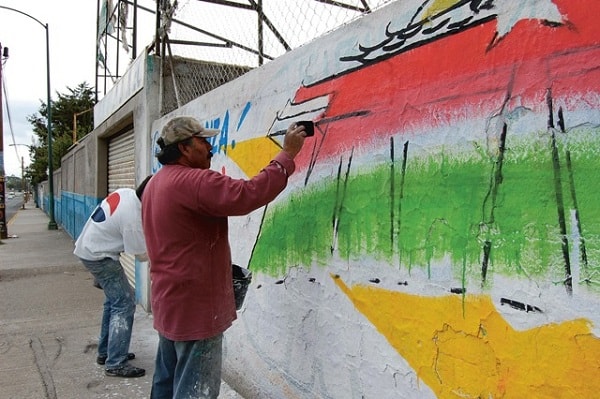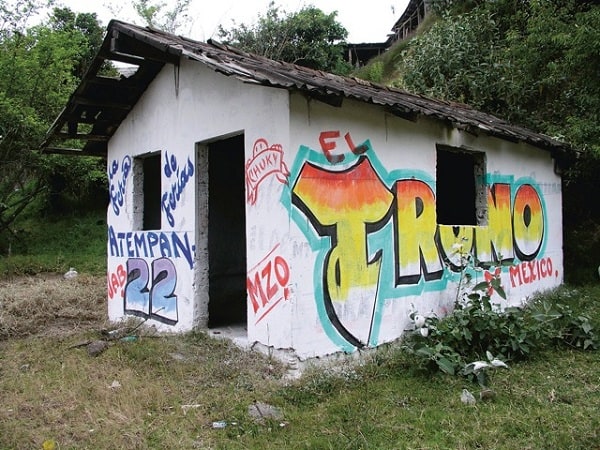6 Oct 2013
Bardas de Baile: Mexican Wall Painting

Bardas de Baile is a fascinating documentation of the ubiquitous painted walls found in Mexico. At first glance the images appear to be graffiti but closer inspection reveals that they are actually advertisements produced to promote local music events. The origin of these colourful pronouncements lies in the 1960s and this book documents their contemporary forms, as well as the ‘Rotulistas’ who produce them.

The book has been a labour of love for author and photographer Patricia Cué, backed by Buzz Poole at publisher Ghost & Company. The final result is not just a documentation of the medium but an insight into its role in Mexican life and culture. The music events that they publicise are important public gatherings and there is often pride in having the advertisements ‘decorating’ one’s walls, although home owners often benefit from complimentary tickets in return for the canvasses they provide. There is also an exploration of the role of walls in Mexican society and their place at the intersection of public and private property and life.
The outside of the wall is often considered ‘public’ by the owner and by the rotulistas [sign painters], and therefore available for painting.

For me, one of the most fascinating aspects of the book is the discussion of the industry that surrounds the production of the signs, including the legal and economic aspects. A good example of this is the comparison of costs per square foot of advertising between billboards and the painted walls. Billboards are more than 20 times the cost which shows why the wall paintings endure given their comparable, if not greater, impact. I’ve talked elsewhere of the shift in labour and technology costs which caused painting signs on walls in the UK and elsewhere to decline. This is yet to take hold in Mexico but the local nature of this form of advertising is also a factor in its longevity.

Given that the painted signs primarily advertise music events, they are necessarily short-term creations, often up for just a couple of weeks. To this end they are not finely-crafted, well-finished pieces. (In one instance documented in the book, three men take just 25 minutes to complete a long wall advertising three music groups.) However, they have a consistency from site to site and it is this which brings elements of branding to local music acts. In fact, this branding is often migrated to other media such as posters and CD covers, demonstrating the strong influence that these ‘Bardas de Baile’ have on Mexico’s visual culture.

The book is a colourful and insightful exploration of this wonderful piece of Mexican visual culture, one that bears similarity in content to the painted signs found in Jamaica, and in form to the wall paintings in Bangladesh. It is a reminder that while the ghostsigns of the UK and elsewhere continue to fade, new creations are going up on walls across the world every day.
In an age that’s clamoring for a global audience, where everything is so intently decentralized, and where mass exposure seems to be the collective ultimate goal, rotulistas are proud anachronisms – rooted to home, hustling a living, keeping their humble craft alive.
For more books on ghostsigns, hand-painted advertising and other forms of lettering, check out the publications page.



